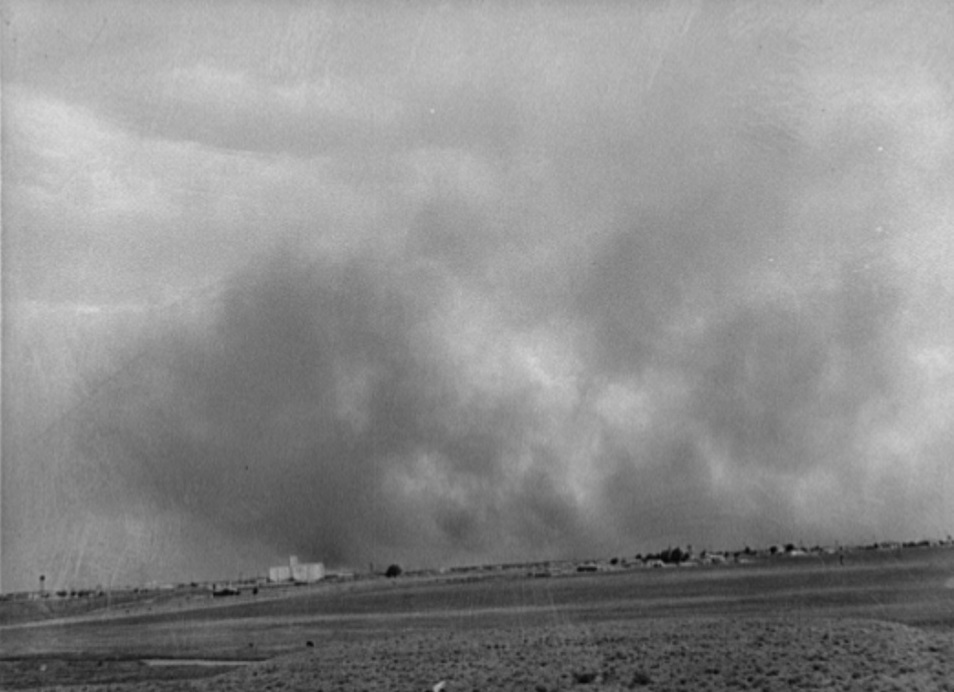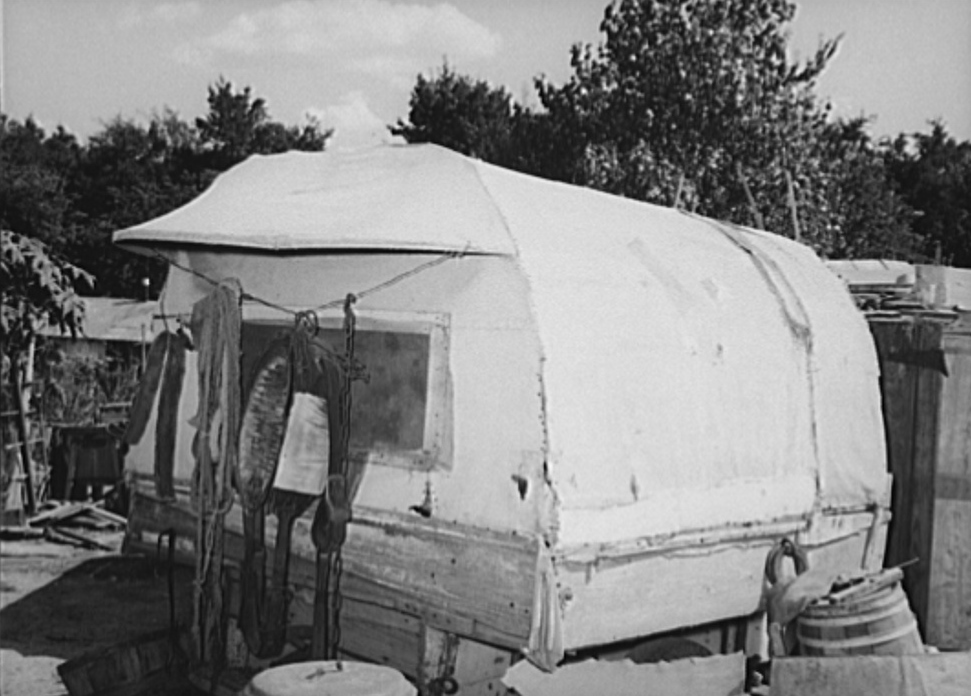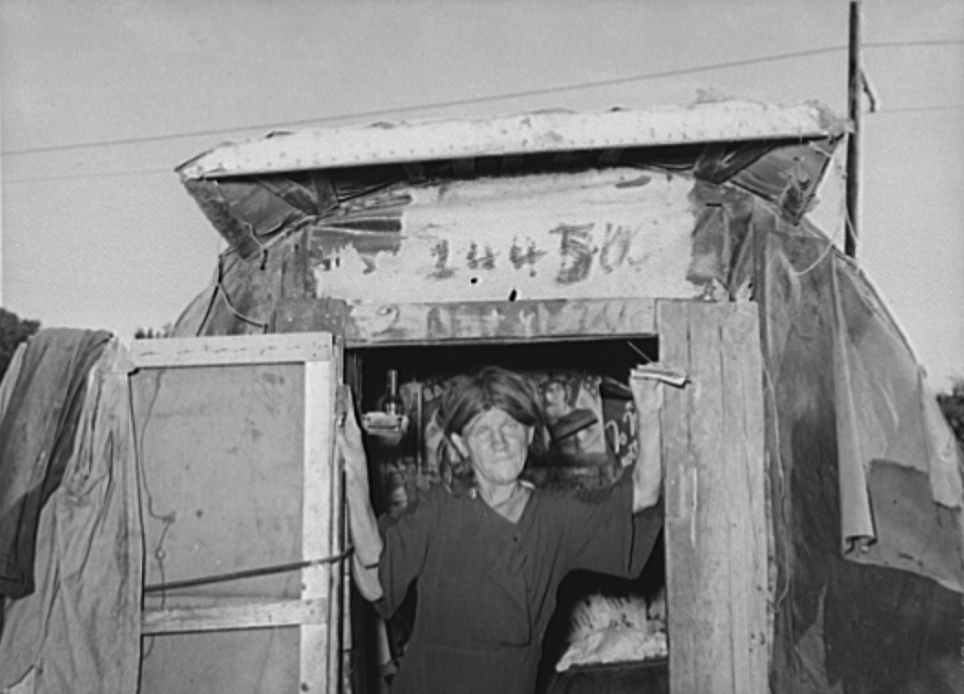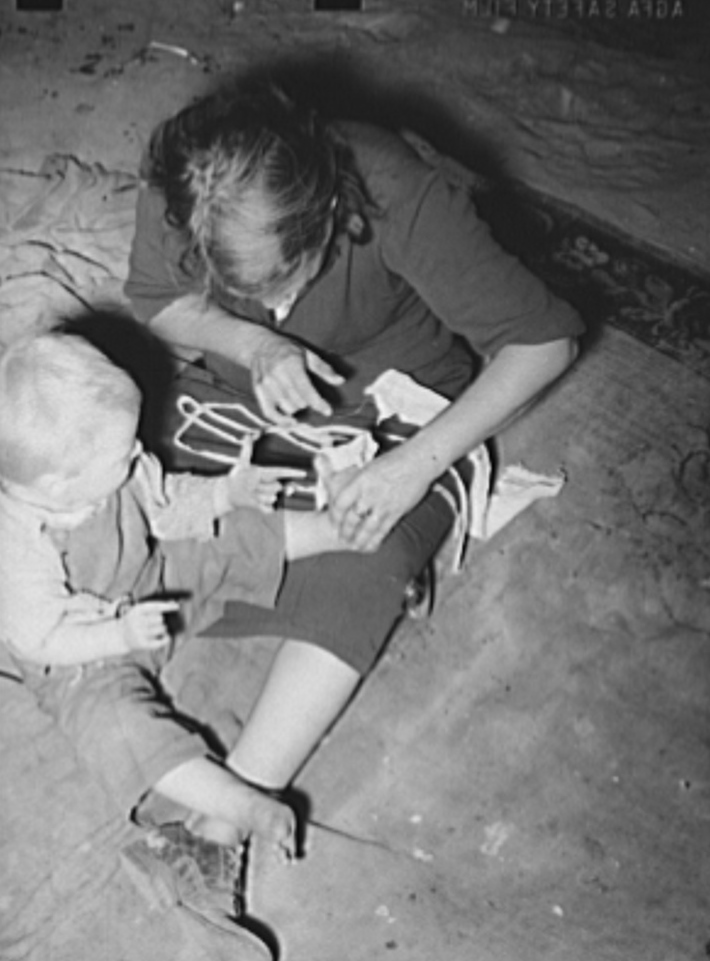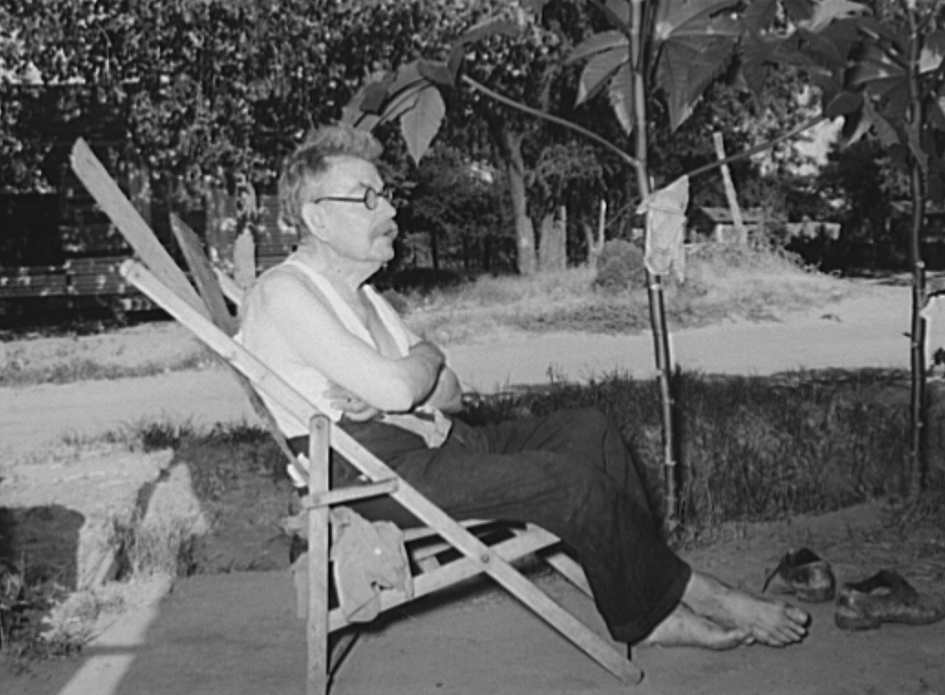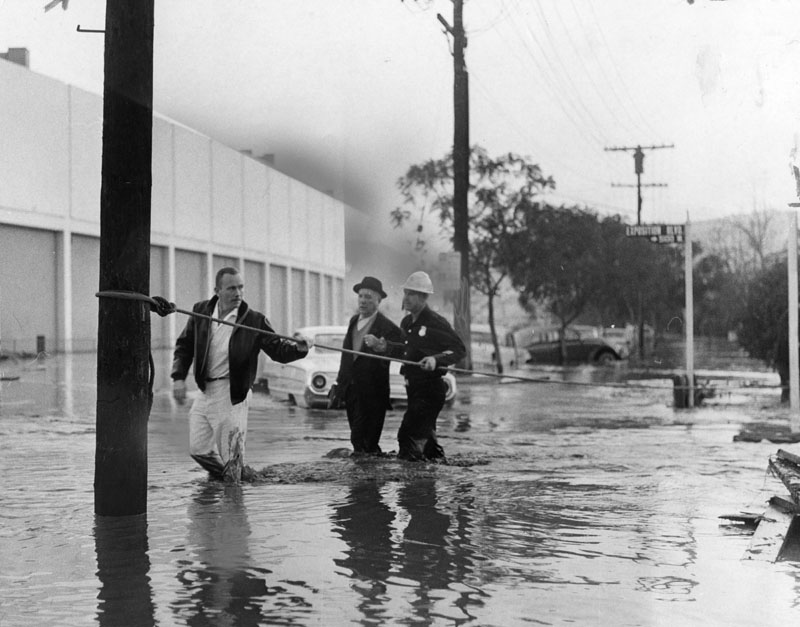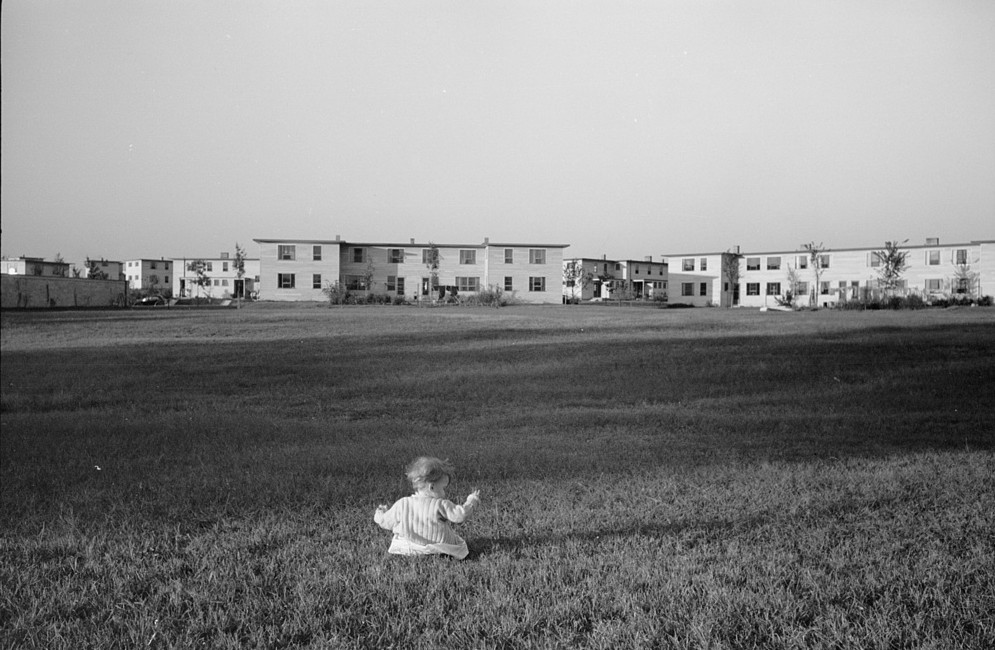The Dust Bowl, also known as the Dirty Thirties, was a period of severe dust storms that greatly damaged the ecology and agriculture of the US and Canadian prairies during the 1930s; severe drought and a failure to apply dry land farming methods to prevent wind erosion.
Farmer and sons walking in the face of a dust storm. Cimarron County, Oklahoma April 1936 by photographer Arthur Rothstein
Dust bowl 1936 abandoned farm by Arthur Rothstein
Dust bowl 1936 abandoned farm by Arthur Rothstein
More than 500,000 Americans were left homeless. Over 350 houses had to be torn down after one storm alone. The severe drought and dust storms had left many homeless, others had their mortgages foreclosed by banks, and others felt they had no choice but to abandon their farms in search of work.
During the drought of the 1930s, the unanchored soil turned to dust, which the prevailing winds blew away in huge clouds that sometimes blackened the sky. These choking billows of dust – named “black blizzards” or “black rollers” – traveled cross country, reaching as far as such East Coast cities as New York City and Washington, D.C. On the Plains, they often reduced visibility to 3 feet or less.
Dust storm approaching Lubbock, Texas May 1939 by photographer Russell Lee
Associated Press reporter Robert E. Geiger happened to be in Boise City, Oklahoma to witness the “Black Sunday” black blizzards of April 14, 1935; Edward Stanley, Kansas City news editor of the Associated Press coined the term “Dust Bowl” while rewriting Geiger’s news story.
The drought came in three waves, 1934, 1936, and 1939–40, but some regions of the High Plains experienced drought conditions for as many as eight years.
Covered trailer in community camp. Oklahoma City, Oklahoma
Home of family in Mays Avenue camp, Oklahoma City, Oklahoma May 1939
Harness and rope on back of covered trailer in Mays Avenue camp. Oklahoma City, Oklahoma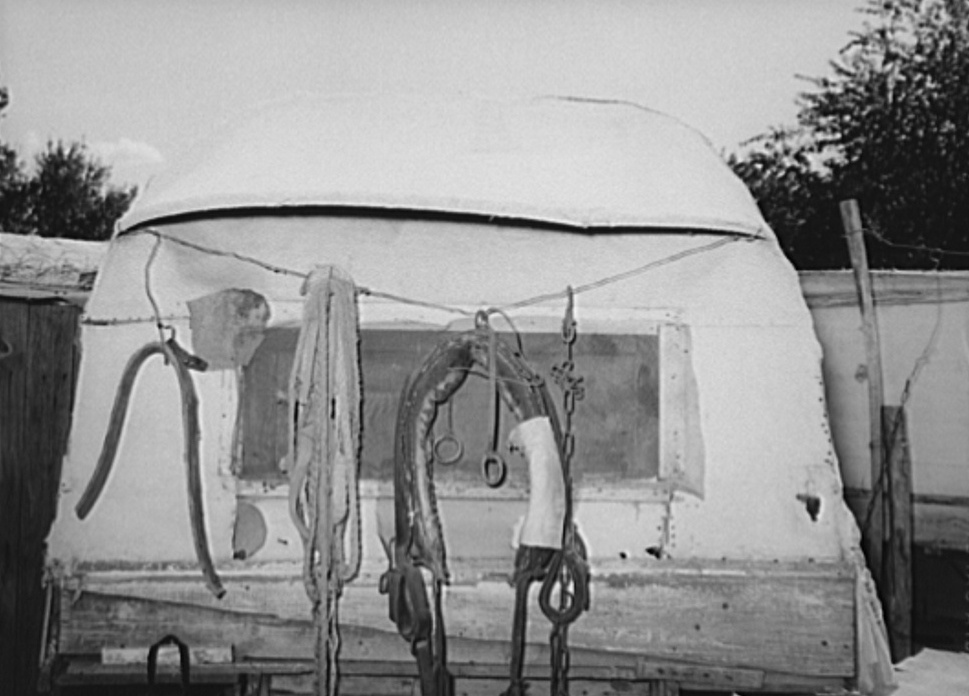
The severe drought and dust storms had left many homeless, others had their mortgages foreclosed by banks, and others felt they had no choice but to abandon their farms in search of work.
Woman living in camp near Mays Avenue, Her husband fought in WWI but denied work relief benefits, Oklahoma City, Oklahoma
Detail of roof of shack in community camp. Oklahoma City, Oklahoma
Top of oil truck made of old carpets. Boy is unloading discarded crates and overripe vegetables which he found in city market.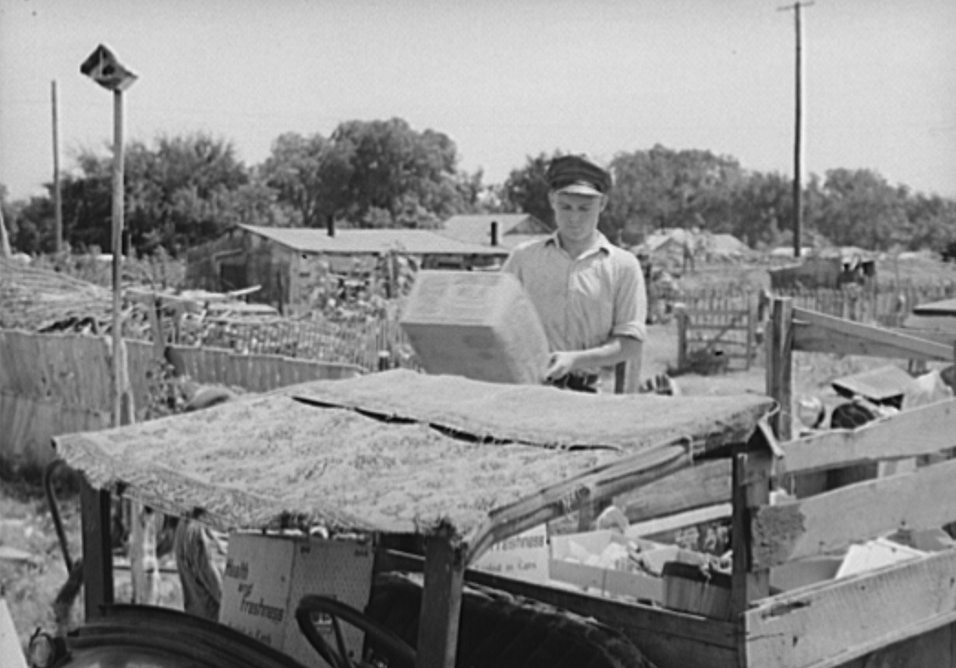
Old plows and wornout tires. Testimonial to the sources of the residents of the community camp. Oklahoma City, Oklahoma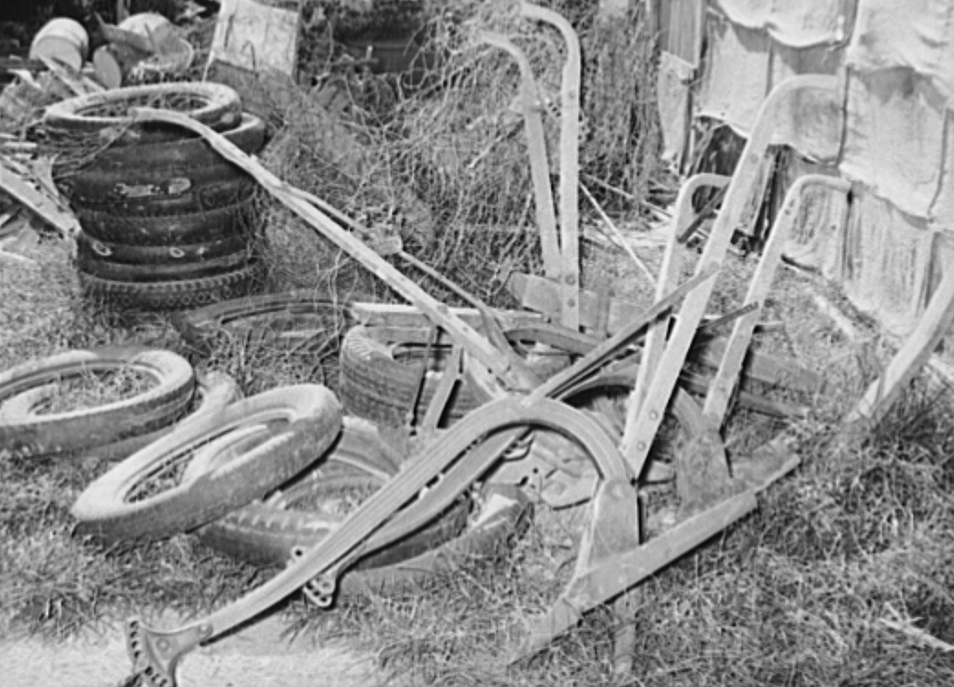
Shoes were a premium in Mays Camp. Many suffered from foot injuries from the dump.
Mother bandaging toe of her son which was cut in debris of Mays Avenue camp. Oklahoma City, Oklahoma
Mother of child pointing to his cut toe, injured while playing in trash and debris of camp. Mays Avenue camp, Oklahoma City, Oklahoma
Resident of Mays Avenue camp taking out a piece of glass from boy’s foot
Resident of Mays Avenue camp, Oklahoma City, Oklahoma, taking piece of glass out of boy’s foot
The children did not have a safe place to play or clothes that fit and they rarely had decent meal.
Baby with his bottle in shack home near Mays Avenue camp. Oklahoma City, Oklahoma
Daughter of water peddler in community camp, Oklahoma City, Oklahoma, asleep. She is covered with old curtain to protect her from flies
Child in Mays Avenue camp, Oklahoma City, Oklahoma, eating an overripe canteloupe found in market
Children of Mays Avenue camp. Oklahoma City, Oklahoma. Their father is a trasher and they are playing with some things he picked up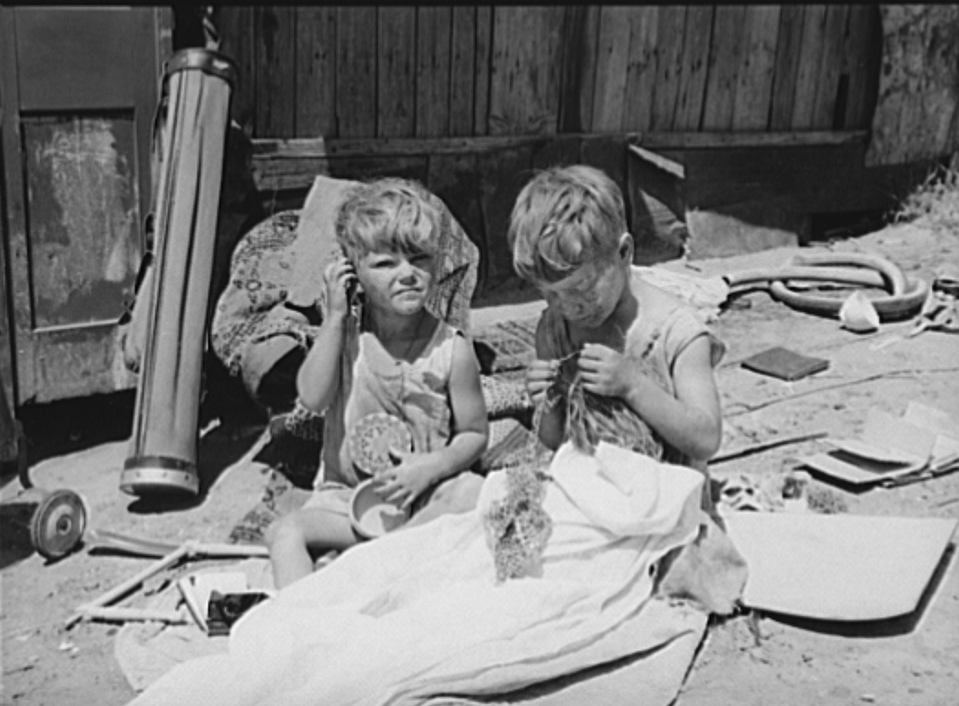
Man with his daughter sitting on bed which is outdoors under bridge in Mays Avenue camp. Notice goat and livestock behind them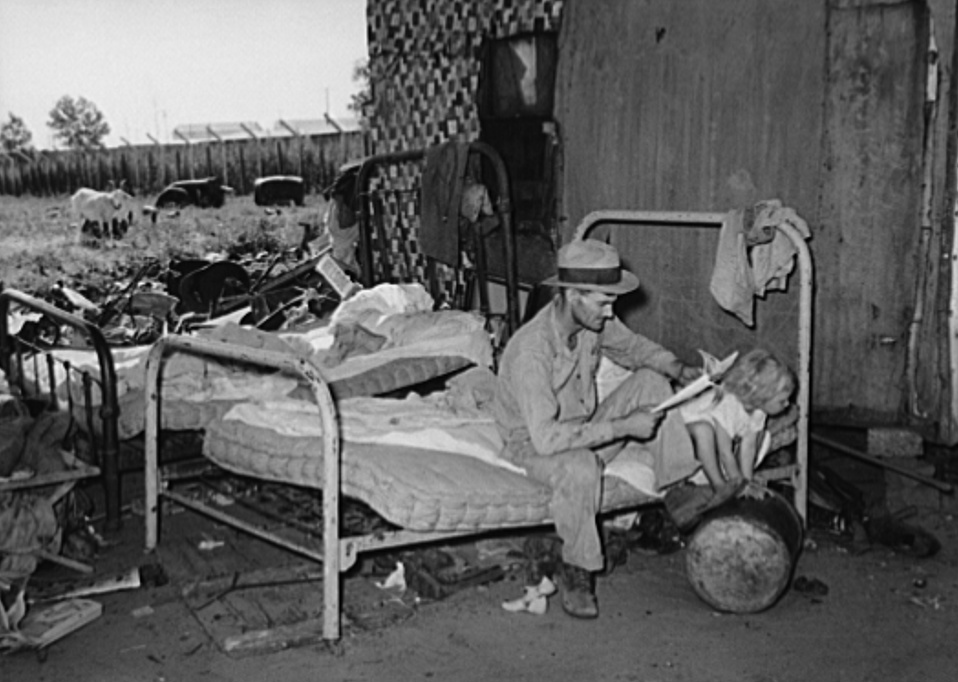
Covering milk with wet cloth in order to keep it cool. Many residents of this camp sneak into stockyards early in the morning to milk cows.
Woman in shack home in community camp. Oklahoma City, Oklahoma. Straightening her son’s hair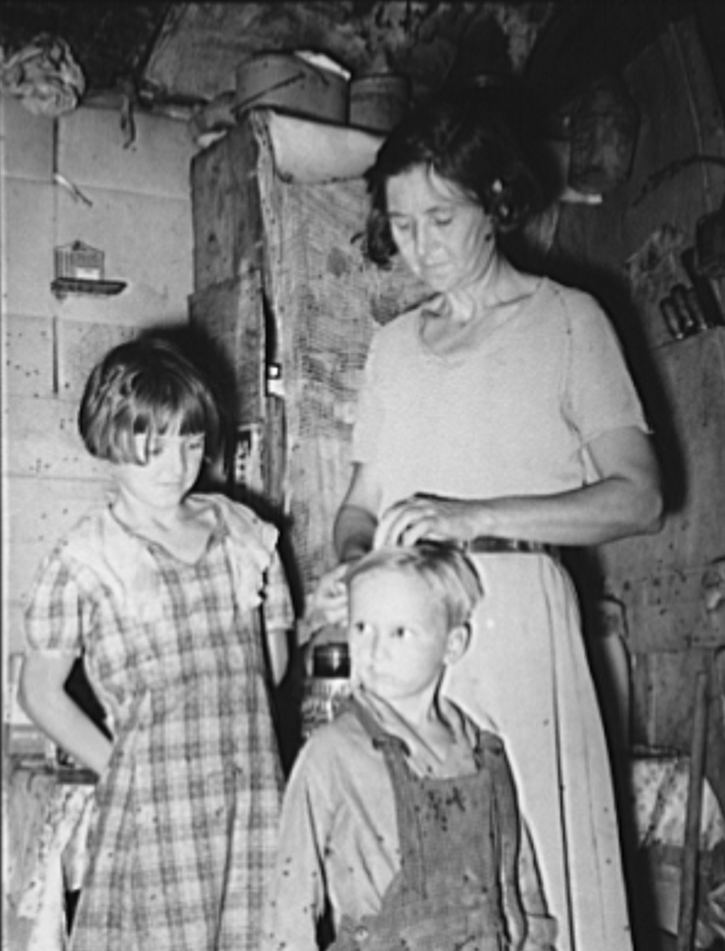
Little girl and her baby brother reading Bible, community camp, Oklahoma City, Oklahoma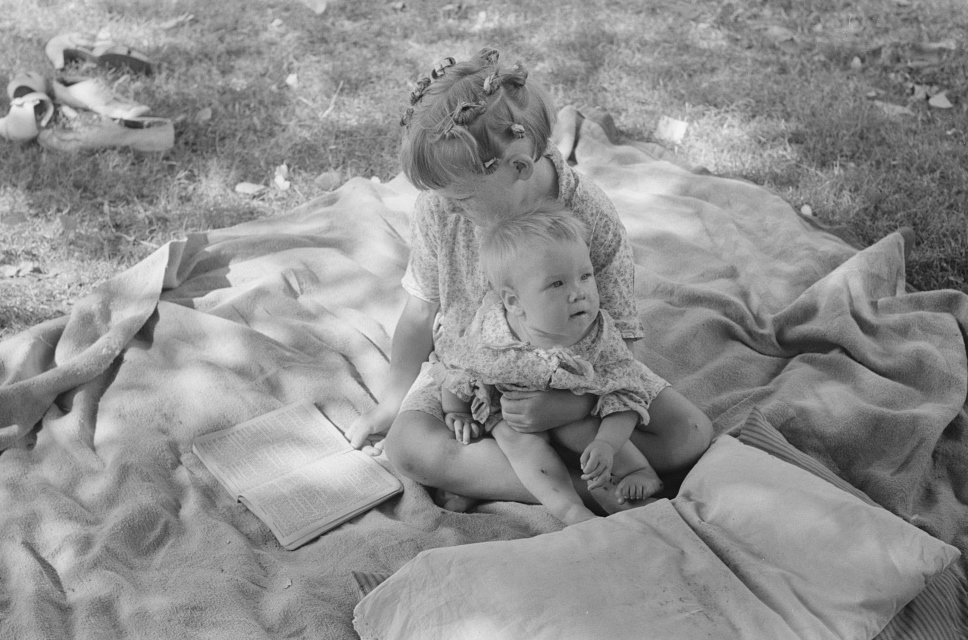
Young married girl living in Mays Avenue camp patching her husband’s overalls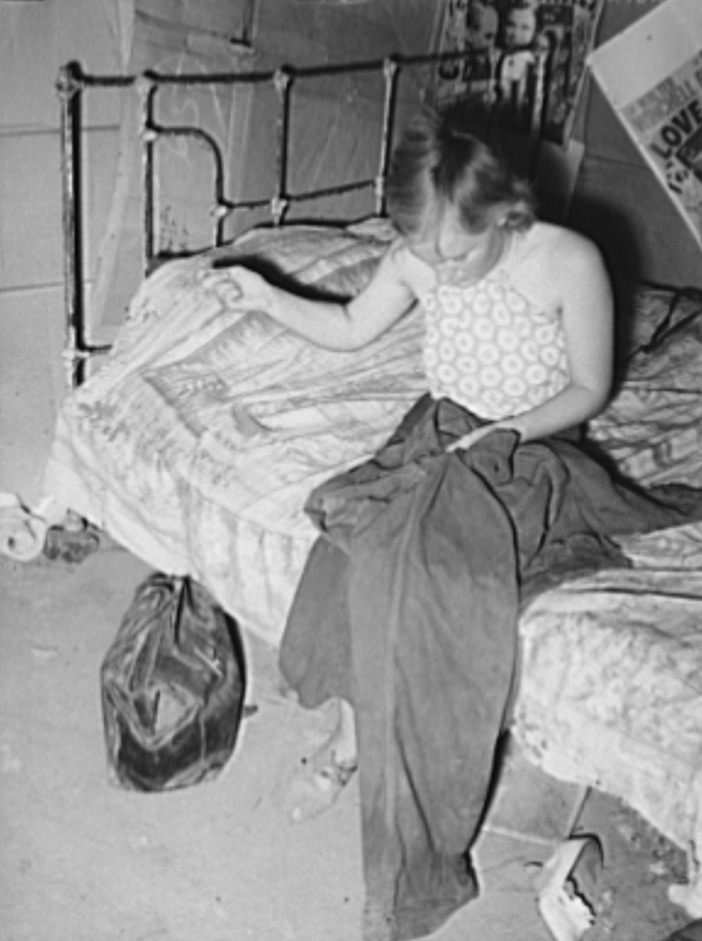
Not all migrants traveled long distances; some simply went to the next town or county. So many families left their farms and were on the move that the proportion between migrants and residents was nearly equal in the Great Plains states.
Many still managed to smile in spite of their dire circumstances and they were proud of their children
Young girl holding baby brother in her arms, community camp, Oklahoma City, Oklahoma
Wife of carpenter and her baby who live in community camp, Oklahoma City, Oklahoma
Couple with their firstborn. Community camp, Oklahoma City, Oklahoma. He did odd jobs. Has never farmed for himself or had a regular job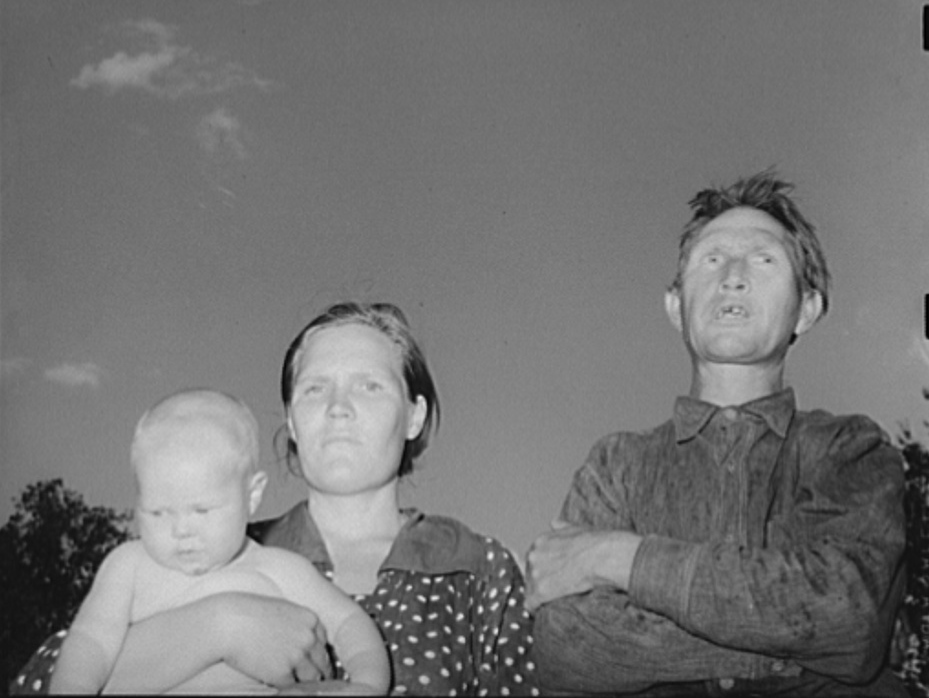
This German farmer below has seen a lot of troubles since he arrived in Oklahoma.
Old German living in community camp. Oklahoma City, Oklahoma. He moved to the state in its young days and watched the state grow up.
Old German living in community camp. Oklahoma City, Oklahoma. He moved to the state in its young days and watched the state grow up. July 1939

The young woman below shared the feeling of many in Mays Camp in 1939.
“We may not have much of a home here but we will have one in Heaven.” Community camp, Oklahoma City, Oklahoma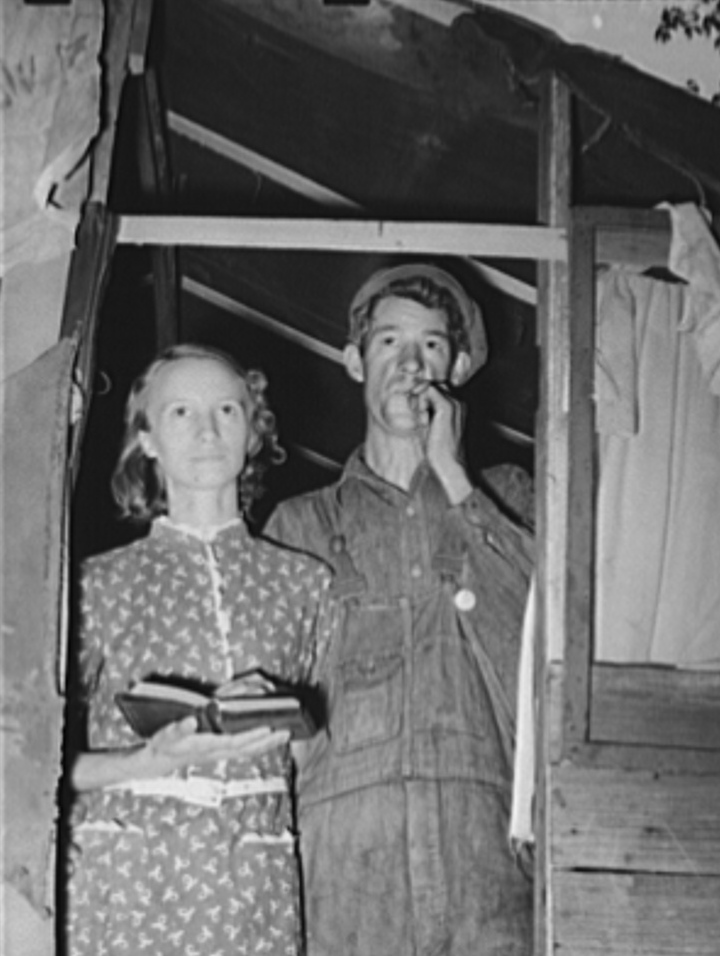
Check out books by Donna R. Causey

RIBBON OF LOVE: 2nd edition – A Novel of Colonial America – the true story of religion in America –Inspired by true historical events, Mary and Henry Pattenden flee to America to escape persecution – It is almost impossible to put the book down until completion. – Dr. Don P. Brandon, Retired Professor, Anderson University


